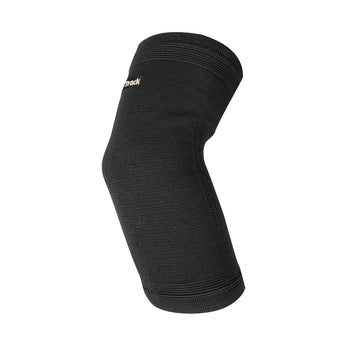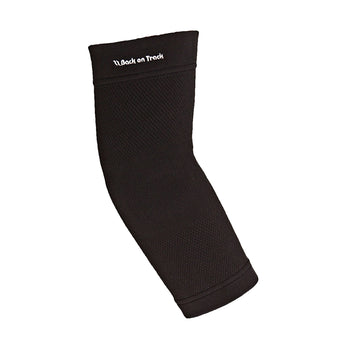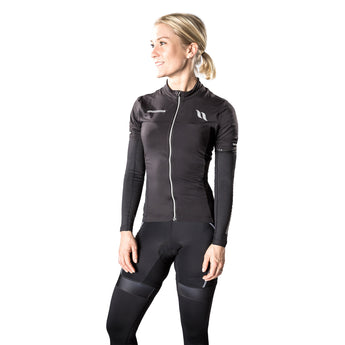Tennis elbow is a common injury that affects the muscles and tendons of the elbow.
Despite its name, you don't have to play tennis to get tennis elbow. This condition can affect anyone and causes painful symptoms that interfere with everyday life.
While tennis elbow often doesn't have a clear cause, proactive management can help prevent and treat the condition. Support braces are frequently used for tennis elbow prevention and recovery, but not all braces offer the same benefits.
Don't let elbow pain keep you from living the active lifestyle you love. Keep reading to learn more about the symptoms, causes, treatments, and best braces for tennis elbow.
Tennis Elbow Explained
Tennis elbow is the common name for lateral epicondylitis. This condition causes pain and inflammation in your elbow and is typically associated with a repetitive strain injury.
A repetitive strain injury occurs when tissue becomes damaged due to the repeated performance of a specific kind of motion.
Tennis elbow gets its name due to its prevalence as a sports injury in racket sports athletes. These sports involve repeatedly using your extensor muscle tendon, which connects your elbow to your forearm muscles.
Tennis Elbow Symptoms
Common symptoms of tennis elbow include stiffness and swelling around the elbow. Pain associated with tennis elbow is typically centered on the outside of your elbow. You may notice a weakened grip when you try to hold a pen, racket, or shake someone's hand.
Tennis elbow often causes a sharp or burning pain that worsens when you bend or twist your arm. Sometimes, the pain feels like it's spreading from your elbow down to your wrist.
Tennis Elbow Diagnosis
The only way to diagnose tennis elbow is to visit your healthcare provider. They'll perform an exam and ask questions to determine if tennis elbow could be the cause of your pain.
If they suspect you have tennis elbow, your provider may perform tests to assess the damage inside your elbow and rule out other causes. These tests may include X-rays, ultrasound, magnetic resonance imaging (MRI), or electromyography (EMG).
Tennis Elbow Causes
Playing tennis isn't the only cause of tennis elbow. Any frequently repeated elbow motion can trigger tennis elbow, especially those that involve gripping and swinging your forearm.
Over time, the compounded stress from these movements can cause tiny tears in your extensor muscle tendon. The condition is prevalent in tennis players due to the constant repeated motion of hitting the ball while gripping the racquet.
Although less common, a sudden elbow injury can also cause tennis elbow.
Tennis Elbow Treatments
Consult your provider about the best treatment options if you are diagnosed with tennis elbow. Most minor cases improve with the RICE method: rest, ice, compression, and elevation.
Nonsurgical treatment options for tennis elbow can include over-the-counter pain relievers, physical therapy, platelet-rich plasma injections, corticosteroids, tenotomy, shockwave therapy, and wearing a brace.
Your provider may suggest considering surgery if you have severe symptoms that persist after months of non-surgical procedures. Your surgeon can inform you about the type of surgery you need and the recovery process.
Tennis Elbow Braces
Wearing elbow and wrist braces provides support and compression, allowing your tendon to rest and heal. Research suggests elbow sleeves and braces can provide immediate relief and improve pain-free grip in patients with tennis elbow.
Consult your provider about the best type of brace for tennis elbow and how often you should wear it.
Back on Track offers several braces that can support individuals with tennis elbow. Unlike other braces, Back on Track braces provide the additional benefits of Welltex® technology. Welltex reflects body heat as far infrared radiation, which increases circulation and supports healing.

Classic 2-Way Stretch Elbow Support
This elbow brace is made of elastic material with Welltex technology and a 2-way stretch for everyday support during training and rest while recovering from tennis elbow. Its anatomical design allows the brace to sit comfortably without sliding or interfering with movement.
Physio 4-Way Stretch Elbow Brace
Back on Track physio products provide a comfortable four-way stretch and extra daily support for an active lifestyle. The thin, elastic material features Welltex technology to create a soothing far-infrared thermal effect that provides relief for people with tennis elbow.
All Back on Track braces are FDA Class 1 devices.
Frequently Asked Questions
Here are answers to frequently asked questions about tennis elbow.
Does tennis elbow affect one or both arms?
Developing tennis elbow in both arms is possible, but the condition most commonly occurs in your dominant arm. Every person has a side they naturally use for most activities. If you play tennis or another sport that involves a repetitive activity, you are most likely to develop tennis elbow in the arm that holds your racket or other tool.
What are the risk factors for tennis elbow?
Anyone can develop tennis elbow. Experts estimate only 10% of tennis elbow patients develop the condition from playing tennis or other sports. Risk factors that can contribute to the condition include smoking, obesity, being older than 40, and regularly lifting more than 45 pounds.
Participating in certain sports, hobbies, and jobs can also increase your risk of tennis elbow. Activities that stress your elbow include tennis, pickleball, baseball, softball, bowling, golf, weight lifting, painting, cooking, carpentry, cleaning, gardening, and playing music.
How long does it take to recover from tennis elbow?
Tennis elbow symptoms can last from a few months to over a year. On average, it takes around six months to recover fully from a tennis elbow injury. Recovery time depends on the cause of the injury, the extent of damage, and the treatments you receive.
How can I prevent tennis elbow?
Avoiding overusing your arm and elbow in repetitive motions is the best way to prevent tennis elbow. If you participate in sports or activities that stress your elbow, consider wearing an elbow brace or sleeve for extra support. Always listen to your body and give adequate time for rest and recovery.
What is the difference between tennis elbow and golfer's elbow?
Tennis elbow and golfer's elbow are both repetitive strain injuries that affect the elbow. Tennis elbow affects the outer part of your elbow, while golfer's elbow affects the inner part. Golfer's elbow is the common name for medial epicondylitis.
References
- Heales, L. et al. Evaluating the immediate effect of forearm and wrist orthoses on pain and function in individuals with lateral elbow tendinopathy: A systematic review. Musculoskel Sci Pract. 2020.
- Cutts, S. et al. Tennis elbow: A clinical review article. J Othopaed. 2020.
- Ma, K.L., and Wang, H.Q. Management of Lateral Epicondylitis: A Narrative Literature Review. Pain Res Manag. 2020.
- Sayampanathan, A., et al. Risk factors of lateral epicondylitis: A meta-analysis. The Surgeon. 2020.












